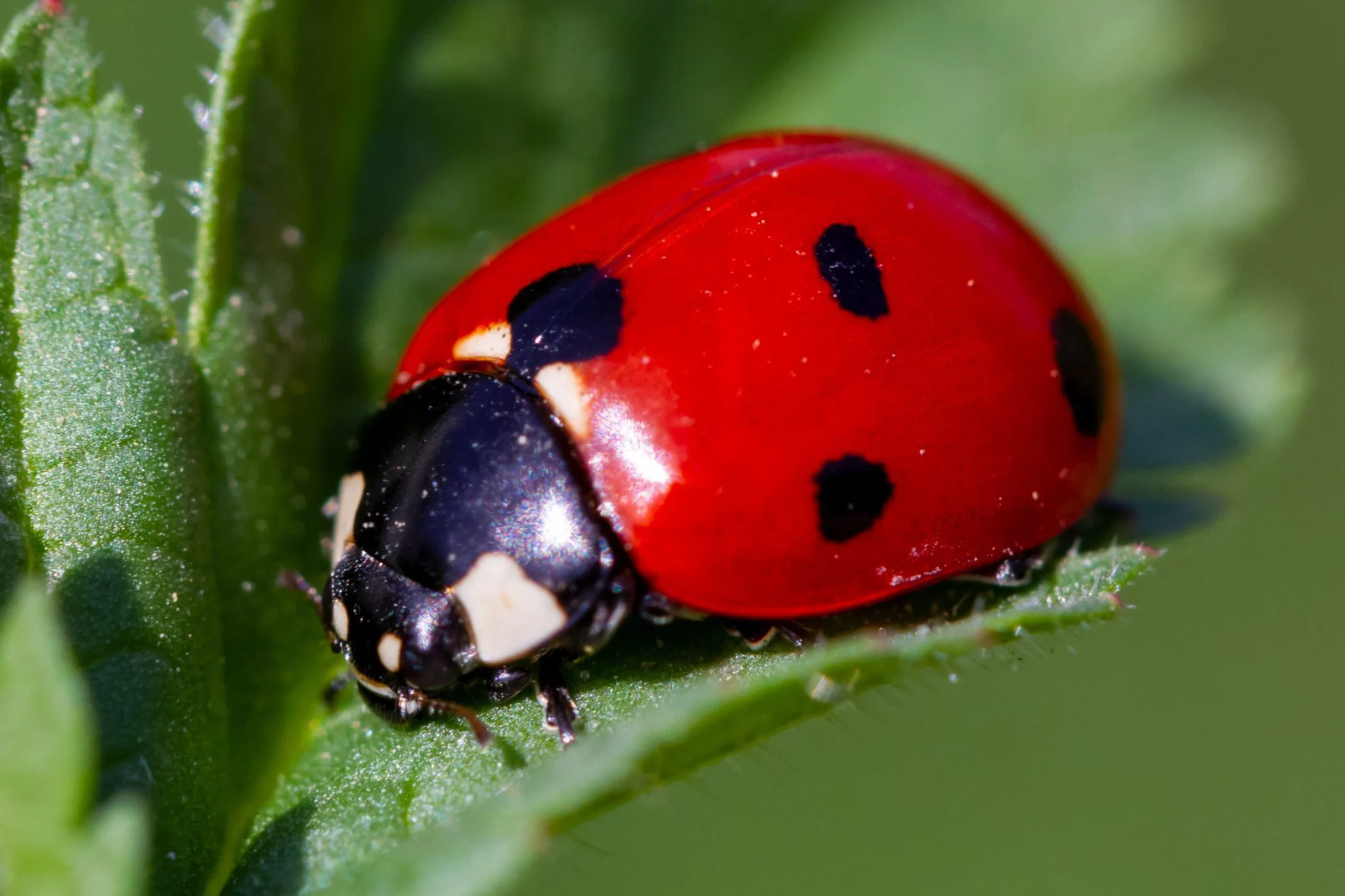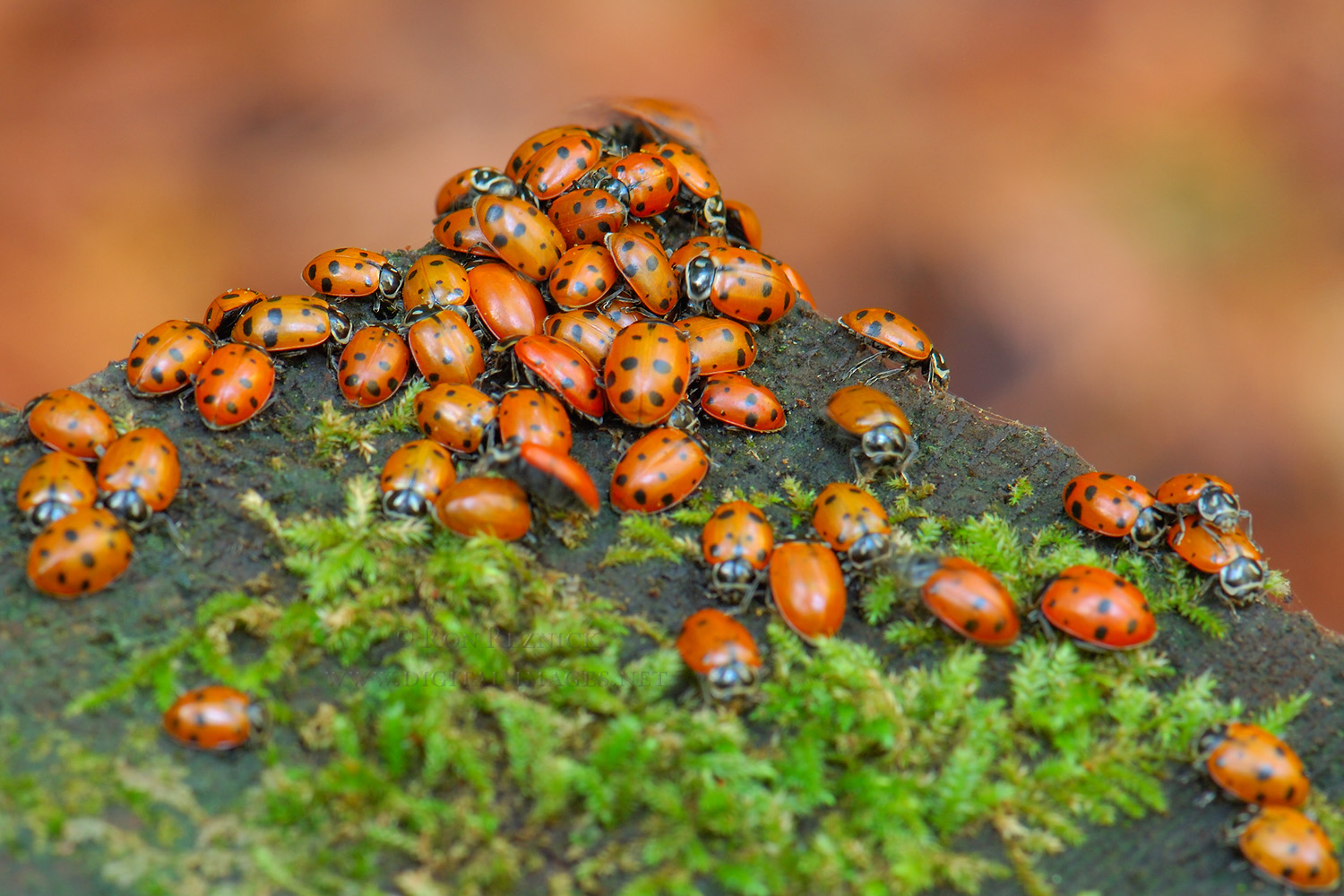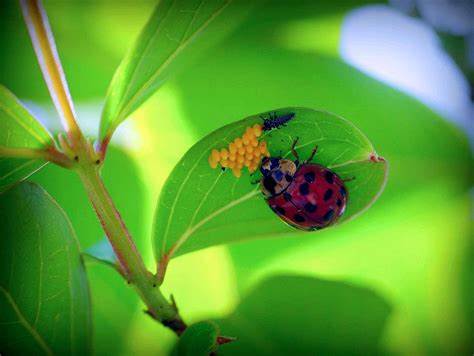Ladybugs are not just these vibrant, gentle, and whimsical insects; they have been the best friends of farmers and gardeners for ages. These beetles with charming spots have been a part of our childhood adventures in gardens, and their symbolic representation in superstitions and folktales is amusing.
But how much do we know about these petite beetles? In this blog, let’s explore these fascinating creatures and bust some intersection myths about ladybugs. From the strikingly beautiful dome to their intellectual defense mechanism, this blog will take you through the journey and history of one of nature’s mesmerizing creations.
Whether you are a curious nature enthusiast or a gardener seeking eco-friendly solutions, or someone who is simply captivated by the beauty of ladybugs, this blog is for you!
All about Ladybugs
Ladybugs, also known as ladybirds or lady beetles, play a very crucial role in the ecosystem. These beetles belong to the Coccinellidae family and have over 5000 species which are found in almost every part of the world. Ladybugs are fascinating and attractive beetles that are usually found with red- and orange-colored spots on the dome; these distinctive spots are considered a sign to its predators, which say, “I taste awful.” To protect themselves, ladybugs play dead and produce an unappetizing and foul-tasting chemical from joints in their legs.

Ladybugs are regarded as good luck in many cultures, and they are the best companions to farmers, as they prey on leaf-eating insects like aphids, scales, and mites. These beetles are native to Europe and were introduced to North American farms in the 1900s to control aphids. Though some species of the seven-spotted ladybird are good for farms, there are other species, like squash beetle and Mexican Bean Beetles, that prey on leaves and are quite destructive.
They are usually active from spring to fall, and they overwinter under logs, rocks, and houses. Hibernation and overwintering in ladybugs are different from other insects, as they do this in clusters. 1000s of ladybugs come together as a mechanism to survive cold weather and resume activities in spring. While in a dormant state, ladybugs diapause, which means suspended development. They are less active, and their bodily functions slow down to conserve energy till spring. It is also noteworthy that overwintering time and duration are not the same for all the species of ladybug.

Are ladybugs poisonous?
No, ladybugs are not poisonous to humans, and they do not carry any known human diseases. Even if ladybug bites or stings you, there won’t be any possible side effects unless you are allergic to beetles, but it is poisonous to animals.
Ladybugs have been coexisting with humans for a very long time, but there haven’t been any reported cases until 1999. When a hypersensitive individual is exposed to these beetles, it triggers various allergic responses, including allergic rhinoconjunctivitis, asthma, urticaria, angioedema, anaphylaxis, etc. But there are many reported cases where dogs were seriously affected by eating ladybugs.
The hemolymph blood fluid produced by ladybugs contains proteins, nutrients, and waste products. This liquid is produced when a predator threatens the ladybug; in some cases, they also produce a yellow and orange liquid from its abdomen, known as defensive secretion, which contains chemicals that can create a burning sensation to the skin and gastronomical effects. Some rare signs include drooling, drowsiness, vomiting, digestion issues, and noticeable behavioral changes.

Interesting Facts About Ladybugs
1. Ladybugs Are Beetles
Ladybugs are not bugs; they are beetles. Though the name says bugs, ladybugs belong to the family of beetles, which is a different class of insects. One of the main differences is their forewings, which are thickened and hardened; their forewings meet in a straight line in the middle of the back when they are at rest. Beetles have mouthparts adapted for chewing, whereas bugs have specialized mouthparts for piercing and sucking.
2. Ladybugs Eat Their Eggs
A female ladybug can lay over 1000 tiny gold-colored eggs underside the leaves covered with aphids. When there is a shortage of food, they eat their eggs and larvae. And the interesting fact is that ladybugs lay infertile eggs when there is scarcity. These infertile eggs are also a ready source of food for young larvae that just hatched from eggs. During the larvae stage, ladybug larvae hunt actively and have a strong appetite for small insects and aphids, which fuel their growth.
3. Nasa Experimented with Ladybugs in Space
In 1999, NASA sent 4 ladybugs and aphids to space in a shuttle led by Elle Collins to study the influence of gravity on natural biological relationships. As we all know, aphids are the favorite food of Ladybugs, and a ladybug climbs the stalk to capture an aphid, and the aphid falls on the ground to escape from the predator. Aphids use gravity as a defense mechanism. To study the defense mechanism of aphids in the absence of gravity, scientists released ladybugs and aphids in zero gravity. Ladybugs did eat aphids in a microgravity environment.
4. “Lady” in Ladybugs Refers to Virgin Mary
According to legends, Europeans experienced a serious outbreak of crop-eating pests during the Middle Ages; upon praying to Virgin Mary, ladybugs appeared to save the crops by eating aphids. In gratitude, farmers named it “Our lady’s beetle”; over time, the name evolved into ‘ladybugs’ and ‘ladybirds’ and was later introduced to other countries. It is believed that the first ever species of 7-spotted ladybug is named after Virgin Mary, and the red & black spots symbolize her cloak and her 7 sorrows. While the story sounds fascinating, it could still be a folk tale by the legends.
5. Ladybugs Cannot See in Colors
Ladybugs have two fully functional round eyes; they cannot see things as we do, but they can spot an aphid from at least 12 inches. Ladybugs cannot see colors; they can only see in shades of gray. Senses like scent and touch play a very important role in their daily life. They also tend to fly when your flashlight is on it, believing that it is the sun and considering it a source of warmth.
Myths about Ladybugs

1. The Spots on The Ladybug Determine the Age
The spots on the ladybug don’t tell the age, the spots. The average lifespan of a ladybug is 1 year, and the spots are with them from birth. Ladybug larvae have a different appearance; the spots on their are developed during the pupal stage and remain the same throughout their adult life. The number of spots depends on the species of the ladybug, some have 2,4 or 7 spots, and some species don’t have spots at all. The spots just serve purposes like species identification, warning predators, and providing camouflage.
2. Ladybugs Are Poisonous and Can Bite Humans
Ladybugs do not bite humans; they have chewable mouthparts called mandibles which help them to eat aphids; these mandibles are not capable of biting or inflicting humans. Some species of Ladybugs do release a yellow color foul-smell fluid as a defense mechanism to protect themselves from predators. Though ladybugs are harmless, some people might have allergic reactions to these beetles.
3. Ladybugs Bring Goodluck
Ladybugs have been long associated with positive symbolism and good fortune. Many cultures believe that ladybugs bring good luck, killing a ladybug brings bad luck, and some even believe that finding a ladybug is a sign of a wedding or love, which is superstitious. In the middle ages, farmers and gardeners used to believe that ladybugs were a good sign as they were beneficial to the crops and protected the crops from aphids. Whether ladybugs bring good luck or not, they are considered a good sign for ecological benefit.
4. All Ladybugs Are Female
Ladybugs are often associated with femininity due to their name, the vibrant colors, and the fact that they are delicate and gentle insects. It is a misconception that ladybugs have only a female population. Ladybugs exhibit sexual dimorphism, which means the difference between males and females is visible in their appearance. The female ladybugs are more vibrant and larger, while the male ladybugs are small and often have less vibrant coloration. These differences may not be the same in all the species, but it is evident that the myth all ladybugs are female is not true.
5. Ladybugs Are Attracted to Light
Ladybugs prefer natural sunlight over artificial light and are usually active during day time, and tend to seek rest during the night. Food sources and warmth attract ladybugs. If you ever find a ladybug near a bulb, it could be because of the warmth, potential prey, their diurnal rhythm, and navigation error. Ladybugs are known to take shelter in warmer areas during winter and at night.
Conclusion
These small and eco-friendly creatures, with their gentle behavior, dainty wings, and vibrant bodies, have graced farms and gardens and have inspired many cultures’ superstitions. In this blog, we have learned some interesting facts and debunked some myths about ladybugs.
So, next time when you spot a ladybug in your garden or on you, do not worry. They are not poisonous and do not spread any diseases. As believed, ladybugs may not grant wishes or change our fortune, but it is a reminder of co-existence. They maintain the health of the plants in our gardens and farms and are harmless to humans unless you are allergic to beetles.
These small beetles have a huge impact, so let’s embrace and treasure these charmers.




